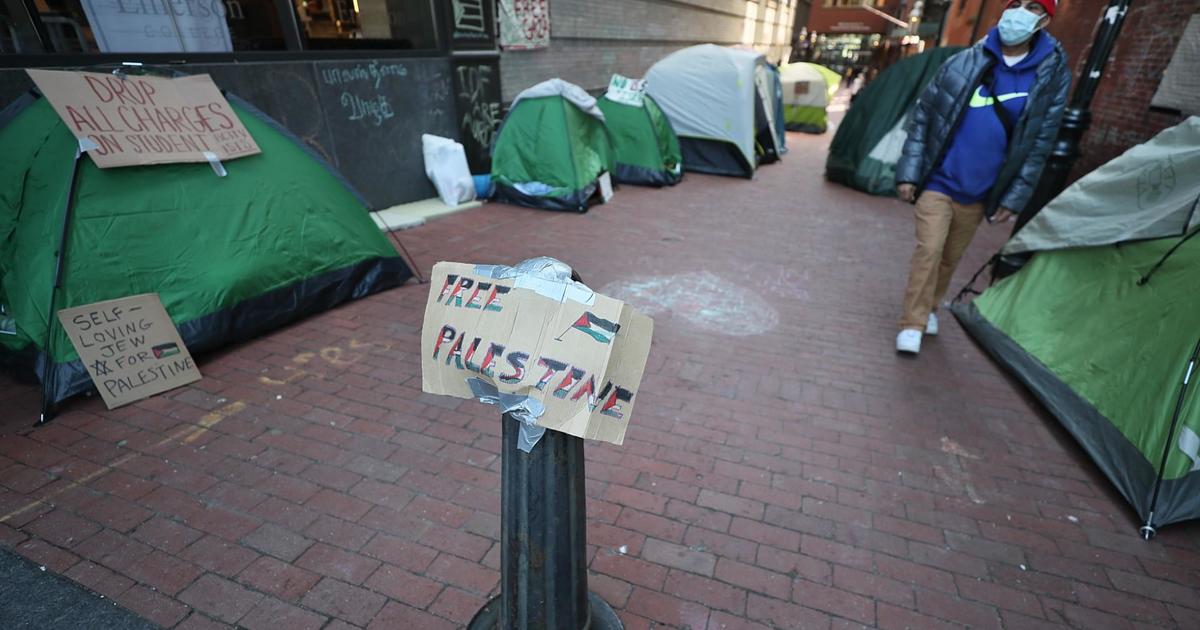Here's who is eligible for Biden's student loan forgiveness program
President Biden on Wednesday announced a plan to erase thousands of dollars in student loans for borrowers, aiming to help more than 40 million Americans who owe a combined $1.7 trillion in debt.
Student debt has soared in recent decades as rising higher education costs have far outpaced inflation. And loan programs haven't kept up, with the Biden administration noting that Pell Grants once covered almost 80% of the cost of a public four-year college, but today only provides enough support to pay for one-third.
The burden of student debt has weighed on borrowers, keeping some from achieving milestones such as buying a home or starting a family due to the financial constraint. But Biden's loan-forgiveness program won't help every borrower, and some — such as lower-income borrowers — may get more of a lift than others.
"The administration's actions will help ensure that pursuing a degree isn't a one-way ticket into poverty," Century Foundation president Mark Zuckerman and director of higher education Robert Shireman said in an emailed statement.
Here's what to know about the new government loan-forgiveness plan, including how to determine if you qualify.
How much is being forgiven?
The Biden administration said that it will cancel up to $20,000 for people who received Pell Grants, which are available to low-income undergraduate students who have exceptional financial need.
The administration said that borrowers who didn't receive Pell Grants will get up to $10,000 in forgiveness.
Pell Grants don't generally need to be repaid, but because they don't cover the majority of college costs, many low-income students need to take out additional loans to enroll.
How do I know if I qualify for forgiveness?
The chief criterion for eligibility is a person's income, as the Biden administration said it is limiting debt forgiveness to people who earn less than $125,000. Married couples can earn up to $250,000 and still qualify for the program.
Because of the income cap, "no high-income individual or high-income household — in the top 5% of incomes — will benefit from this action," according to the White House.
People seeking debt relief can provide either their 2020 or 2021 incomes in applying for loan forgiveness.
What is a Pell Grant?
Pell Grants are a need-based aid program that awarded $27 billion to 6.3 million undergraduate students in 2020, according to a report from the Congressional Research Service.
In the 2017-18 academic year, about 95% of Pell Grant recipients came from families earning less than $60,000, the report noted. Because the awards are grants, they don't have to repaid except in some circumstances, such as if a student drops out of college.
Although they don't have to repay the grants, Pell recipients often do rely on other sources of funding to pay for college — which means they typically have more debt than other students. One report found that Pell recipients typically graduate with about $4,500 in additional debt than other students.
If you're not sure if you received a federal Pell grant, review any financial aid award letters administered through the Office of Federal Student Aid.
Why are Pell Grant recipients getting more debt relief?
Because these recipients are from lower income families, with about half of the grants going to students from families earning less than $20,000, according to education site Education Data Initiative.
The typical grant is about $4,500 — far less than the average annual tuition of $37,400 for a year of college at a private institution or almost $10,000 in tuition for a public college. As mentioned above, that means many Pell recipients take on more debt to graduate.
The Biden administration believes that providing more aid to Pell Grant recipients will also help narrow the racial wealth gap, as Black borrowers are twice as likely to receive the grants as White students.
Can I apply for student loan forgiveness now?
Not yet. The Department of Education is working on what the White House describes as "a simple application process for borrowers to claim relief."
However, it may not be ready until the end of 2022. The Biden administration plans to have the application ready before federal student loan repayments — which have been frozen since the pandemic erupted in 2020 — are due to begin on January 1, 2023.
Up to 8 million people may automatically receive loan forgiveness because their income data is already available to the Department of Education, the White House said.
Will I have to pay taxes on the loan relief?
No, because the loan forgiveness won't be treated as taxable income, according to the White House.
Are parents with Parent PLUS loans eligible?
Yes, according to White House officials. That could provide relief to millions of parents who took out loans to help their kids afford college, experts note.
"These 3.7 million families whose parents owe upward of $104 billion through Parent PLUS loans are the 'hidden casualties' of the student loan crisis," according to a statement from The Century Foundation president Mark Zuckerman and director of higher education Robert Shireman.
The median debt load held by a parent with Parent PLUS loans is almost $30,000 by the time their child graduates, according to a Century Foundation study on the program. Even 20 years later, parents typically still owe about 40% of the balance, which means that they're paying off debt longer than they raised their children, the study noted.
Are current students with loans able to apply for forgiveness?
Yes, according to the White House. Students who are dependents will use their parents' income to determine whether they are eligible for the debt forgiveness.
—The Associated Press contributed this report.



